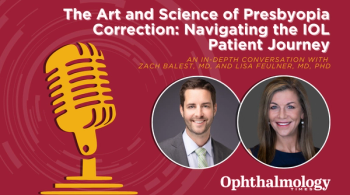
High-speed, high-resolution imaging of eye in sight
Fort Lauderdale, FL-Ultra-high-speed, ultra-high-resolution spectral-domain optical coherence tomography (SD-OCT) seems to have surpassed the slow-speed, low-resolution OCT and provides video images of the minute structural changes in the glaucomatous eye.
Teresa Chen, MD, demonstrated the capabilities of the instrument at the annual meeting of the Association for Research in Vision and Ophthalmology. Johannes F. de Boer, PhD, of Massachusetts General Hospital/Wellman Center for Photomedicine, Harvard Medical School, Boston, developed the SD-OCT.
How SD-OCT works
The previous-generation time-domain OCT differs from SD-OCT in that it has lower resolution (about 10 μm) and slower acquisition speed. Ultra-high-resolution time-domain OCT solved the problem of resolution but is extremely expensive. The titanium-sapphire laser source alone that is commonly used for ultra-high-resolution time-domain OCT can cost about $80,000, according to Dr. Chen. This is compared with about $8,000 for the superluminescent diode laser source.
The primary difference between SD-OCT and the previous OCT instruments is in the way information is processed, she explained. When the light returns from the eye and the reference mirror, it is processed by a spectrometer, hence the term SD-OCT. The data are then processed by Fourier transformation, and the data can then be used to create an image.
"For the first time we have a system that has simultaneous ultra-high resolution and ultra-high acquisition speed," Dr. Chen said. "It is more affordable and easy to maintain compared with ultra-high-resolution time-domain OCT."
Newsletter
Don’t miss out—get Ophthalmology Times updates on the latest clinical advancements and expert interviews, straight to your inbox.


















































.png)


